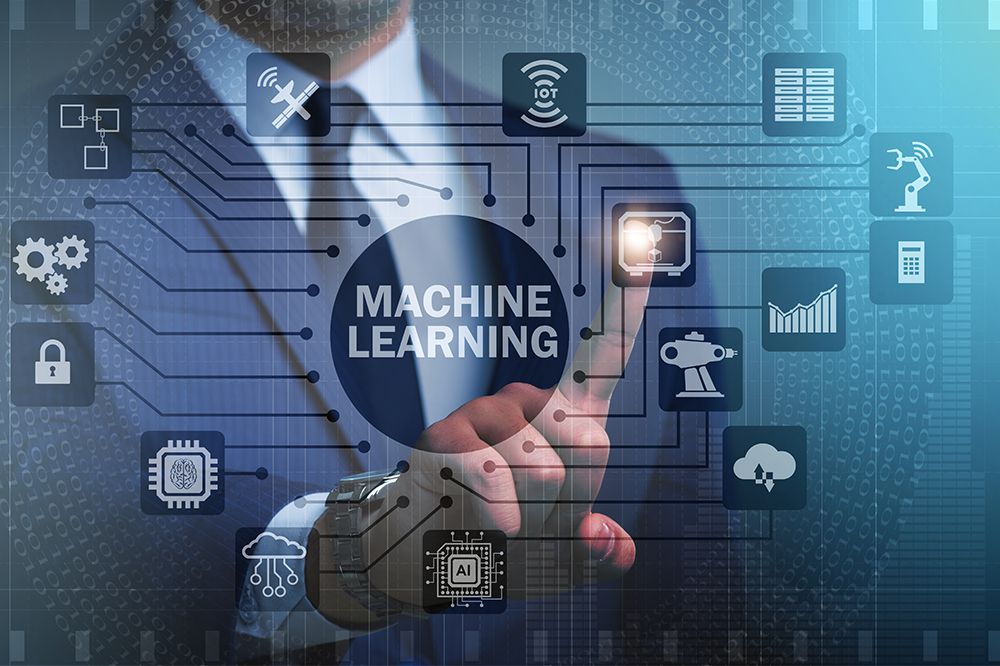
4 Types Of Machine Learning Developers Need To Understand
Technology is constantly shaping how people live and work. The rise in AI jobs is a testament to the transformative power of machine learning. If you’re a developer, you need to understand different types of machine learning to stay ahead of the curve. There are several types, each with a different application. This diversity makes the field captivating and enables AI to address problems in a wide range of industries.
The tech world is moving fast and there’s demand for skilled AI professionals. You are at the forefront of a revolution that is reshaping industries, from healthcare to finance and beyond. But to seize the opportunities presented by this Rise in AI jobs, you need to understand the nuances of machine learning. This knowledge will make you a sought-after developer. Here are 4 types of machine learning you should understand.
- Supervised Learning: Guiding Machines With Labeled Data
In this type of machine learning, AI is given labeled data to mentor and guide its understanding. It’s taught how to make predictions and recognize patterns through data. Supervised learning plays a pivotal role in various domains. For example, in the field of healthcare, it’s instrumental in diagnosing diseases requiring medical images. According to a recent study by McKinsey, healthcare AI applications could potentially save the industry $100 billion annually by 2023, thanks to supervised learning.
Although supervised learning offers the promise of accurate predictions, it has some limitations. It heavily relies on labeled data, which can be time-consuming and expensive to acquire. Additionally, its performance may deteriorate when applied to new or unseen data, making it essential for developers to understand when to utilize this type of learning.
- Unsupervised Learning: Finding Hidden Patterns In Unlabeled Data
Unlike supervised learning, this technique doesn’t require labeled data to train the machine. Instead, it allows the machine to explore and identify hidden patterns and structures within unlabeled data. Machines do this by analyzing similar data points and bringing the underlying structures to the surface.
Unsupervised learning has a vast array of applications. In the financial sector, it’s employed for fraud detection, helping institutions save billions of dollars annually. In fact, a recent report by the Association of Certified Fraud Examiners states that organizations lose an estimated 5% of their annual revenues to fraud. Unsupervised learning’s ability to identify unusual patterns can be a game-changer in curbing these losses.
While unsupervised learning holds incredible potential, it can be challenging to assess the quality of the results since there is no labeled data to measure against. Developers need to be mindful of this and employ additional techniques for evaluation and validation.
- Reinforcement Learning: Machines That Learn From Experience
Reinforcement learning takes a different approach. It’s the kind of machine learning where the AI agent learns by interacting with an environment and receiving rewards for its actions. Instead of specific instructions, it explores and learns from trial and error, somewhat like how humans learn from experience.
In the field of robotics, reinforcement learning is a game-changer. According to a report from the International Federation of Robotics, the worldwide sales of professional service robots increased by 41% in 2020. These robots are increasingly being used in industries like healthcare and manufacturing to perform tasks efficiently.
However, reinforcement learning can be computationally expensive, requiring substantial time and resources for training. Furthermore, it may not be suitable for applications where the cost of failure is high. Developers need to carefully consider whether the benefits of reinforcement learning outweigh its costs in specific scenarios before opting for it.
- Semi-Supervised Learning: The Blend Of Labeled and Unlabeled Data
Consider a scenario where you have access to both labeled and unlabeled data. In this context, semi-supervised learning shines. It’s a hybrid approach that leverages a mix of labeled and unlabeled data to train machines. Think of it as finding the right balance between guidance and exploration.
Semi-supervised learning is invaluable in text and speech processing. Transcribing audio to text, for instance, relies heavily on this technique. The availability of vast amounts of unlabeled data makes it a cost-effective solution. According to a report by Verbit, the speech recognition market is projected to grow at a CAGR of 17.2% from 2021 to 2028, demonstrating the increasing importance of this application.
However, the effectiveness of semi-supervised learning largely depends on the quality and quantity of available labeled and unlabeled data. Striking the right balance can be a complex task that developers must carefully navigate.
Wrapping Up
You’ve just gone through the heart of artificial intelligence’s diversity. Each machine learning type presents its unique set of principles, challenges, and applications. As a developer, understanding the intricacies of these four types is your key to success in the ever-expanding world of machine learning. The future of technology is in your hands, and with a firm grasp of these machine learning types, you’re well on your way to shaping it.







